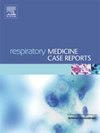Severe bronchiectasis and chronic rhinosinusitis due to homozygous WFDC2 Variants: The first three cases reported from Japan
IF 0.8
Q4 RESPIRATORY SYSTEM
引用次数: 0
Abstract
We report three cases of bronchiectasis caused by homozygous WFDC2 variants. The ages at diagnosis of bronchiectasis were 18, 24, and 16 years, and all patients had a history of chronic sinusitis since childhood. Despite low nasal nitric oxide levels, the radiologic features resembled those of cystic fibrosis, characterized by bronchiectasis predominantly in the upper lobes. All patients experienced frequent exacerbations and respiratory dysfunction, even with long-term macrolide therapy. Consequently, two of the three patients required lung transplantation. Considering the possibility of founder mutations, WFDC2 variants should be included in diagnostic panels for patients with sinopulmonary disease in Asian populations.
由纯合子WFDC2变异引起的严重支气管扩张和慢性鼻窦炎:前三例报告来自日本
我们报告三例由纯合子WFDC2变异引起的支气管扩张。支气管扩张的诊断年龄分别为18岁、24岁和16岁,所有患者均有儿童期慢性鼻窦炎病史。尽管鼻部一氧化氮水平较低,但放射学特征与囊性纤维化相似,主要表现为上叶支气管扩张。所有患者都经历了频繁的恶化和呼吸功能障碍,即使是长期大环内酯治疗。因此,三名患者中有两名需要肺移植。考虑到创始突变的可能性,WFDC2变异应包括在亚洲人群中肺疾病患者的诊断小组中。
本文章由计算机程序翻译,如有差异,请以英文原文为准。
求助全文
约1分钟内获得全文
求助全文
来源期刊

Respiratory Medicine Case Reports
RESPIRATORY SYSTEM-
CiteScore
2.10
自引率
0.00%
发文量
213
审稿时长
87 days
 求助内容:
求助内容: 应助结果提醒方式:
应助结果提醒方式:


